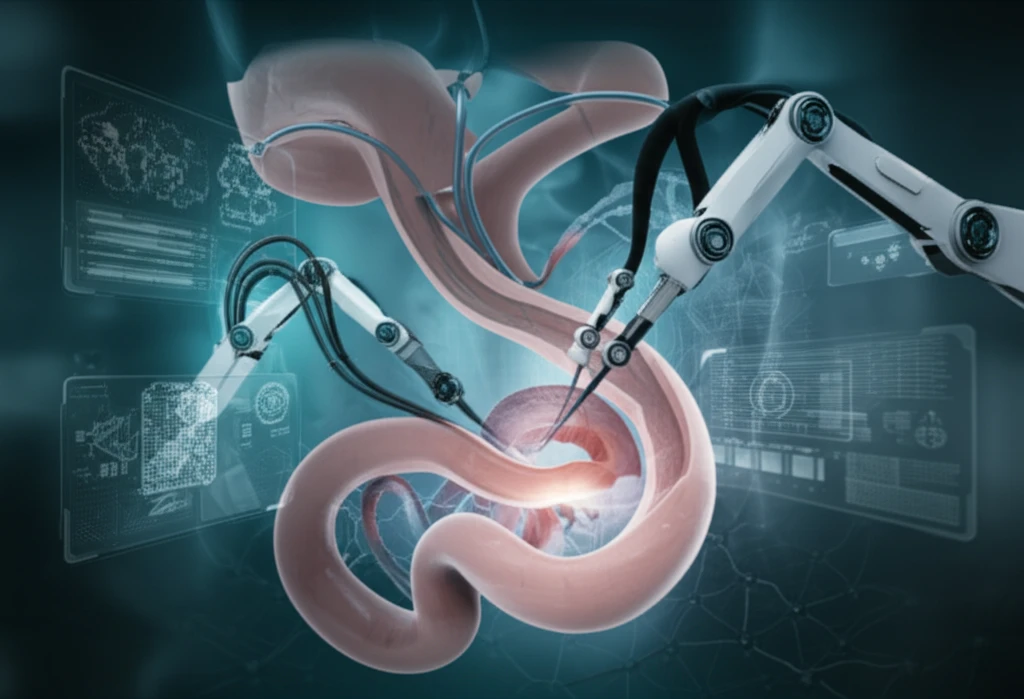
Robotic vs. Human Assistance in Colorectal Surgery: Which is More Effective?
"A new study investigates whether robotic scope holders like Soloassist® can improve laparoscopic colorectal resections compared to traditional human assistance."
Laparoscopic surgery has transformed colorectal procedures, offering minimally invasive approaches that benefit patients worldwide. As techniques evolve, two major trends are emerging: single-incision laparoscopic surgery (SILS) to reduce scarring, and the integration of mechanical supporting equipment like robot-assisted surgery. These advancements aim to enhance precision, reduce surgeon fatigue, and improve patient outcomes.
Among the innovations in surgical technology, robotic scope holders have garnered attention. The Soloassist® system, a joystick-guided endoscope remote control, allows surgeons to control the field of view, potentially offering greater control and stability during procedures. This system, in particular, has been applied in all laparoscopic surgeries including emergency operations.
A recent study has evaluated the efficacy of the Soloassist® system in laparoscopic colorectal resections, comparing it to traditional human scope assistance. The study aimed to determine if Soloassist® can reduce operative time, blood loss, and other key surgical metrics, ultimately assessing its value as a robot-assisted surgical instrument.
Soloassist® vs. Human Assistance: Key Findings

The study, which involved 273 laparoscopic colorectal resections, compared 130 cases with human assistance (HA group) to 143 cases using Soloassist® (SA group). Researchers analyzed operative time, blood loss, setup time, length of hospital stay, and the number of participating surgeons. Statistical methods, including logistic regression, were used to balance potential biases between the groups.
- Reduced Surgeon Involvement: The Soloassist® group required fewer participating surgeons (2.5 vs. 3.3 in the human assistance group, p<0.01).
- Operative Time: While the Soloassist® group showed a trend toward shorter operative times, the difference was not statistically significant (268.5 min vs. 287.0 min in the human assistance group, p=0.07). However, significant difference was demonstrated only in right-side colectomy (p=0.01).
- Lymph Node Dissection: The total number of dissected lymph nodes was higher in the SA group (HA group: 18.6 vs. SA group: 21.0, p=0.02).
- No Significant Differences: Setup time, conversion rate, perioperative complications, and length of hospital stay were similar between the two groups. Importantly, there were no system-specific adverse events associated with Soloassist®.
The Future of Surgical Assistance: Efficiency and Innovation
The study suggests that Soloassist® offers a safe and feasible alternative to human scope assistance in laparoscopic colorectal resection. By potentially reducing the number of surgeons required and maintaining comparable surgical outcomes, Soloassist® provides possibilities for saving human resources in laparoscopic colorectal resection without prolonged operative time or system-specific morbidity.
One of the distinct advantages of the Soloassist® system lies in its intuitive design and ease of use. The joystick control allows surgeons to manipulate the laparoscope with dexterity, while the slim design of the robotic arm minimizes interference with surgical instruments. The system's compatibility with existing operating room setups further enhances its practicality.
While the present study offers valuable insights, future research should focus on prospective, randomized trials comparing Soloassist® to both human assistance and full-robotic surgery. Further investigation into long-term outcomes and cost-effectiveness will help determine the optimal role of robotic scope holders in modern surgical practice.
